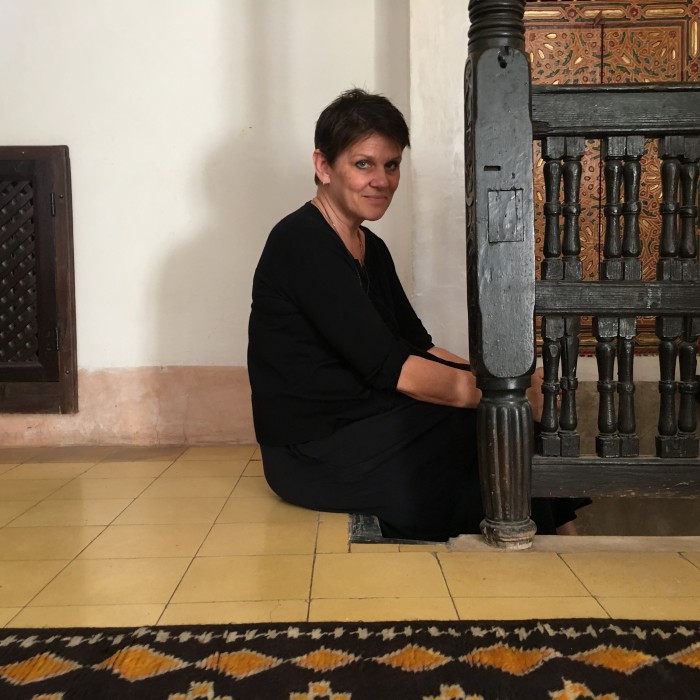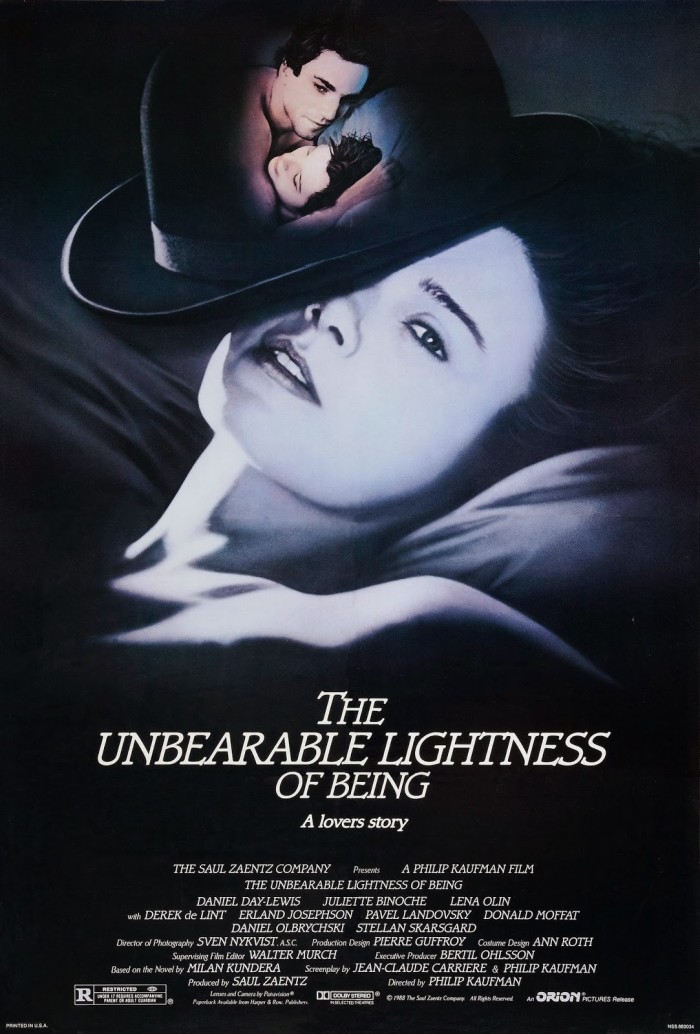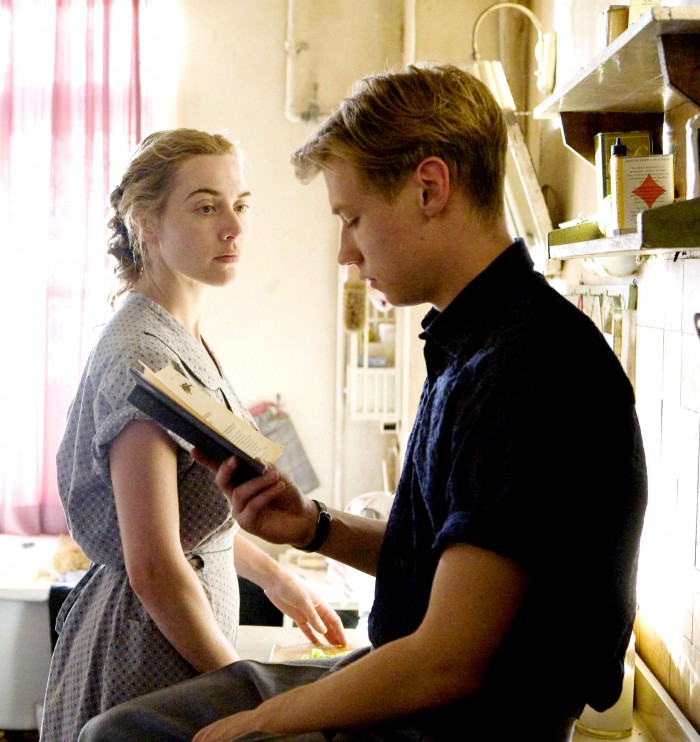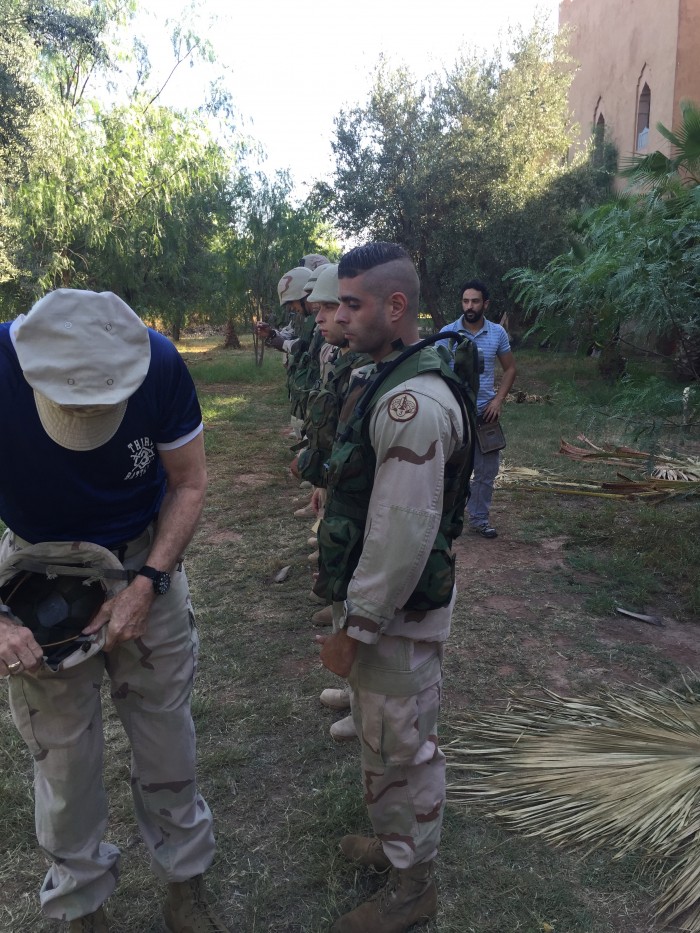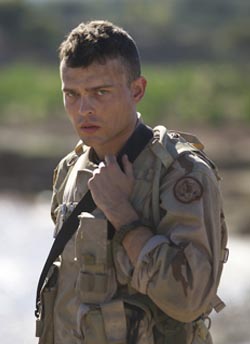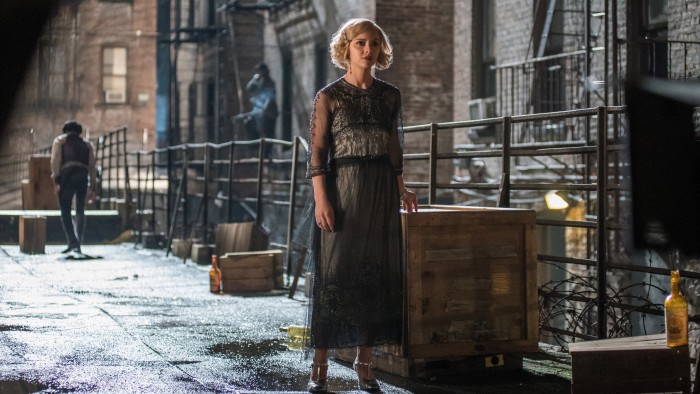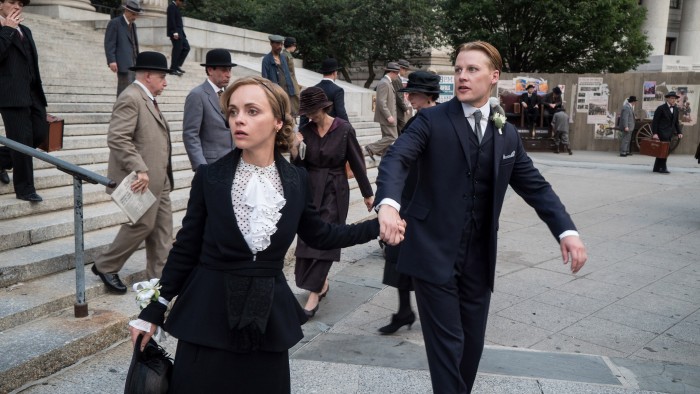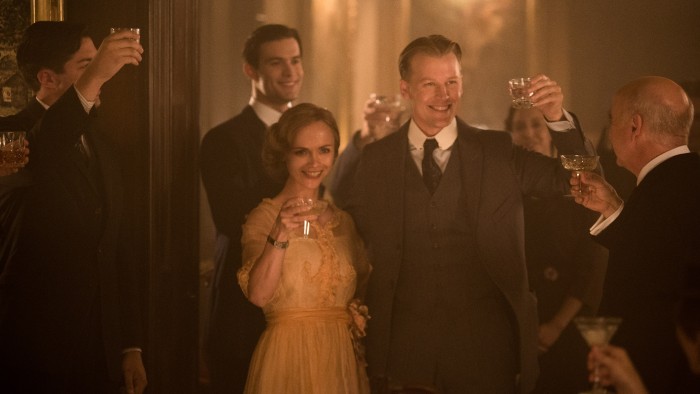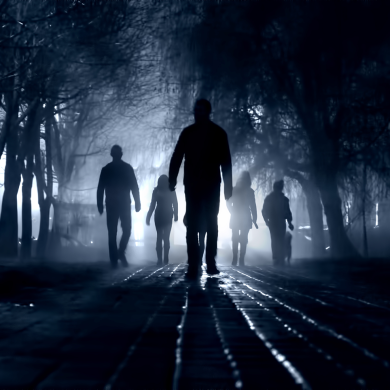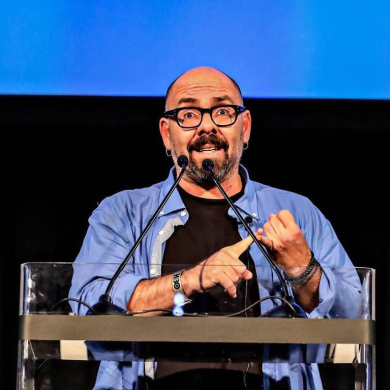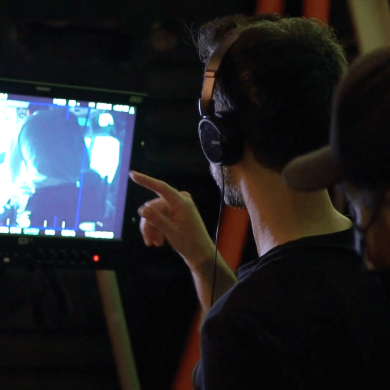By: Gregg LaGambina
Eleventh in the series.
Donna Maloney’s story cannot be told without talking about her friend and mentor, Ann Roth. The working relationship between Maloney and Roth should make the most cynical among us believe in something like fate, purpose, or the idea that sometimes you cross paths with just the right person at just the right moment and suddenly, a course is set for the rest of your life.
Ann Roth is a celebrated costume designer who has worked on over 100 films. She has won an Oscar® for Best Costume Design (The English Patient) and was nominated for a Tony® for her work on The Book of Mormon. Maloney, on the other hand, began her film career by accident, when she accompanied a filmmaker friend on a trip to Belize and ended up getting hired as a film courier on the set of the The Mosquito Coast. By her own admission, this is the kind of thing that might happen when you’re a recent “religious studies” graduate with no real plans for the future.
But, as it turns out, Maloney was really good at her job. She would carry the actual film canisters back and forth between Belize and Miami, delighting the crew on set with gifts from “back home.” This is when she got the attention of the film’s producer who began to wonder why the film courier, of all people, was becoming quite popular with his team. They quickly became friends and when he went on to make his next film in Paris (The Unbearable Lightness of Being), Maloney made sure he kept his promise to get her another job. So, she headed to Paris and arrived on the very same day as the film’s costume designer – Ann Roth.
It’s probably lazy to use the phrase “the rest is history” here, but in this particular case, it might not just be a cliché, it’s also the truth. The pair have worked on over 35 films together, over the course of four decades, and we couldn’t think of anyone more qualified than Donna Maloney to share with CreativeFuture what, exactly, a costume supervisor’s job entails and why she had to fly back and forth between Miami and Belize over 50 times to get to where she is today.
Gregg LaGambina: As a kid, did you dream of one day working in Hollywood as a costume designer, or supervisor?
Donna Maloney: No, not at all! I went to Penn State. I have a degree in theology. At the time, I think it was called “religious studies.”
GL: Wow. I wasn’t expecting that.
DM: Yeah, “wow” is right! That’s what my parents said too [laughs]. For me, I knew that I was never going to work in a field related to what I was studying, but it was how I wanted to spend those four years in college – discovering as much as I could about life, philosophy, theology, and anywhere down that road I could go. I was always on sort of a quest. I find that stuff very fascinating, so I decided to study it and get a degree.
GL: If you didn’t plan on pursuing a career related to your studies, where did you go after you graduated from Penn State?
DM: I moved to New York right out of school and I worked in the clothing business doing sales. I was not built for it – or good at it – in any way, shape, or form.
GL: Is this is where you started to learn about costumes and headed down the path you’re currently on?
DM: Well, I eventually met someone who helped get me a job – after interviewing for about six months – as a production assistant on commercials. That job led to meeting another woman I was working with who wanted to do a documentary about Belize. She would go there on her summer vacations and I went to Belize with her as her production coordinator. I had no idea what that job meant either! I was just going and taking pictures of things.
When we had finished working on her film, I headed back home, but she stayed behind and ended up working as the film courier for The Mosquito Coast. She ran the film between Belize and Miami. She sent the film from Miami to New York, then waited around for a day for the film to processed. When it came back from New York, she picked it up, and then flew back to Belize. After about three weeks of that, the director decided that he wanted to see the film every day. So, they needed another film runner. She called me and said, “Could you be here tomorrow?” I said, “Yes.” Luckily, I had my passport, and when it was all over, I took 52 flights between Belize and Miami as the film runner on The Mosquito Coast.
GL: How many?
DM: 52.
GL: That’s not true.
DM: [Laughs] It is true! Fifty-two flights. I was flying with the film in my possession. I would fly to Miami, then I would put it on a plane to New York. She had left the car that we had rented together in the parking lot. She would always tell me where the car was. I would pick up the car. I would go to our hotel – or wherever the room was we rented in Miami – and then she would leave from Belize when I was heading back. I would be back in Belize to pick up more footage the next day. We just went back and forth like that and I never saw her. Not once.
GL: This sounds like a drop-off situation in a gangster movie. Was the film in a silver briefcase with handcuffs?
DM: [Laughs] No, but it was a box of unprocessed film. So, they didn’t want to put it through the X-ray machines at the airport because they were afraid it would get destroyed. That’s why we had to hand carry it.
GL: I can’t imagine there is much of a demand anymore for this process you just described. Is “film courier” still a job people get?
DM: It’s not really, because almost everything is digital now. But, at the time, that’s how I got started. I would spend a lot of nights in Miami, but I was not a wildly social person. I wasn’t the kind of person who would go hang out at bars at night. But I would go shopping. So, the crew started asking me things like, “Would you get me a pair of sneakers from Miami? Would you get me my perfume that I like? Would you get me this CD that just came out?” I would bring back a duffle bag full of things for the crew every single time, every other day, when I got back to Belize. Finally, one of the film’s executives [Paul Zaentz] said to me, “Who are you? Who is this person that is making my crew so happy? I don’t really understand this. Who are you?!”
After that, we became really, really good friends. The next film he worked on – The Unbearable Lightness of Being – was set to shoot in France. I was going to Italy to have a little summer vacation with my roommate at the time. Paul said “Oh, come over and I’ll give you a job.” I was really snotty at the time [laughs], and I told him that I had a bad experience in France and that I didn’t really like it there. I turned down the job.
But then, once I’d been in Italy for six weeks, I was like, “You know what? Maybe I really do want to stay in Europe.” I called Paul back and said, “I’m going to come to France.” And he was like, “I didn’t offer you a job!” And I said, “Yes you did!” [Laughs] So, he went into the wardrobe department and he told the costume supervisor that he had to hire me. And the costume supervisor thought that I was Paul’s girlfriend, and that I was a “must-hire.” So, he hired me to do the laundry [laughs]. Basically, I was the costume production assistant who did laundry. But my first day in Paris was Ann Roth’s first day on the set.
GL: And this is when your decades-long working relationship – and friendship – began
DM: Yes. Ann had prepped for the film in New York, but it was her first day in Paris, and within 20 minutes of chatting we found out that we had both grown up in Pennsylvania. We became fast friends from that point on. We were working six-day weeks and on our seventh day we wouldget in the car and go look at castles and monasteries. We were on location most days, but then we would go to museums and just sort of hang out too.
I had no idea, really, who she was when I met her, but I remember one of the first things she said to me. Daniel Day-Lewis was the star of the movie and she was talking to the costume supervisor and she said, “So, you know, we need to get a tailor,” and I said, “Oh, if he just needs his pants hemmed, I can hem his pants. I know how to sew.” She looked at me as if I had two heads [laughs].
GL: And just like that, you’re a costume supervisor?
DM: Not quite. But I think there was something that was so innocent about me, or the way I offered to help, because I had no idea what the protocol on set was. I just said I could do it! I guess Ann thought it was endearing and she took me under her wing.
GL: It’s as if a little ignorance can turn into ambition because you don’t know not to say something like that when you’re on set.
DM: That’s exactly right. The other thing about Ann is that I’ve been around other designers who don’t want anyone to have an opinion. Their opinion is the only opinion that matters. Ann is not like that. She invites people’s creativity and she invites opinions and is interested in what everyone has to say. She might pooh-pooh you and give you a dirty look, but she still invites it. In a way, it’s how she stays young, and keeps her eyes fresh. I think that’s a beautiful thing about her.
GL: She certainly pulled you into this world of costume supervision, but you’ve also gone off on your own and done more than just supervision, including wardrobe design. Maybe you can navigate me through the difference between “wardrobe,” “wardrobe supervisor,” “costumer,” and “costume designer,” all of which you’ve been credited for on a wide variety of films. At what point in your career did you gain the full confidence to actually design and not just supervise?
DM: I was a production assistant for a while. I did that entire movie [The Unbearable Lightness of Being] as a production assistant. I came back to New York at Christmas – because Ann had finished her work in December – and she called me and said, “Do you want to go to a play with me?” I said, “Yes,” of course. I think we saw Tommy Tune on Broadway. I can’t remember.
But she turned to me at intermission and said, “So, I got this call about a job in Georgia. Would you be remotely interested?” I said, “Um, I was thinking about staying in Paris, but yeah, why not! That’d be great!” That’s literally what I said; I was such a little dope back then [laughs]. This was on another Daniel Day-Lewis film, so it was really great.
So, I went to Georgia as a costume supervisor on this movie [Stars and Bars]. I literally had no idea what “costume supervisor” meant, in terms of a job. No idea whatsoever. When I was in France, I just started asking a costume supervisor I knew a million questions – “How do you do this? How do you do that?” Everything else, I just sort of figured it out on my own on set. I think it’s because my brain is naturally equipped in a way that helps for this kind of work. You have to be really organized. You have to pay attention. And, once I’ve seen something, it’s in my head forever. That’s an important skill for someone doing this kind of work.
GL: After you worked with Ann in Georgia, what was next? Maybe we can talk about what your role as a “costume supervisor” looks like day-to-day.
DM: I did the film in Georgia and it was a great experience. From that point, Ann and I worked together for a very, very long time. I worked exclusively with her as her supervisor for years. What a supervisor does is they hire the crew. Once the costume is decided upon, the supervisor is responsible for all of the continuity – making sure everything gets aged and dyed. If it needs to look like it’s 100 years old, the costume supervisor is in charge of hiring the person who does that. The costume supervisor makes sure it’s delivered to where it needs to be and brought back in time for it to be in the film. All of the logistics of the costume department is on the costume supervisor.
This might mean running to department stores to track down multiples of an item because the production needs six more of the same outfit. It can mean consulting with the assistant director so you know how many background actors they are going to use, how they’re going to load in 15 wardrobe racks in the morning, dress all of the background actors, undress them at the end of the night, hang all the clothes, and put those 15 wardrobe racks back on the truck.
It’s a lot of moving parts that go with what we do. Especially in New York, when you’re on the street all the time. That’s the whole point of people shooting films in New York is that you get that city’s vibe and look. But this means you’re in and out of places all the time – in and out of churches, in and out of holding spaces, up and down stairs, 15 to 20 racks of clothes. It’s a very physical job too.
GL: Living in Los Angeles, you’ll often drive by a location shoot and see the trucks marked “wardrobe.” Those racks are everywhere with people running in and out of trailers with new outfits.
DM: Yeah, exactly! The costume supervisor figures all of that out. When does the truck arrive? What crew is going to be there to meet the truck to load it all in? What crew is going to be waiting on the other end to receive the returned clothes? Are they going to dress all of the background characters? Who’s going to be there when they wrap for the day? That’s all part of a costume supervisor’s job. And I did that for a very, very long time.
Then, I started working for other people. And I think because Ann allowed me to be creative, I never felt like some horrible need to go off in my life and design for myself. I was dressing all the background, I was in fittings, and I had an opinion that she listened to. I never felt I had this really serious need to be creative, until I worked with other people besides Ann. That was when I realized, most of the time, they don’t want your opinion. They don’t want to hear anything. They just want to do their thing without any input from anyone else. That’s not what I wanted to do in my life, you know what I mean? That’s just not who I am.
GL: I’m guessing this is when you went back to work with Ann.
DM: I went back and did Guarding Tess with Ann. Later, she was asked to do The Reader for director Stephen Daldry, but it was at the same time she was doing Mama Mia! in Greece, and The Reader was being shot in Germany. So, she said to them, “I can’t be there.” But they insisted that she do it, so she sent me in her place. I went over to Germany and I realized, “OK, this is all on me.”
Ann eventually arrived in Germany, but I was there for a year – an entire year – because there were a number of hiatuses. One was because Nicole Kidman was our original leading lady and she was on another film [Baz Luhrmann’s Australia], and that film kept getting extended, extended, and extended again. And then when Nicole Kidman finally got off that project, she discovered that she was pregnant, and she would not wear prosthetics. I went over to Germany in like June or July, hired a crew, then came back with about 50 crates of clothing that I had shipped over.
Kate Winslet was eventually cast to replace Kidman. We started shooting in September, then October, and November. I came home for Christmas, went back for three weeks to finish everything with Ralph Fiennes, then came back to New York in February and March. For about six weeks, we tested with Kate Winslet, working out her costumes and make up. There were a lot of prosthetics, hair and makeup tests, and costumes – I was part of that entire process.
Then, at one point, my daughter was graduating from high school and I told Ann I had to go back for her graduation. This is when Ann went over for two weeks while I was away. After that first visit, she would come over every once in a while. But, basically, I was the costume designer for The Reader.
At that time, I had a child and was a single mom, so I would take whatever job came along. Now, I don’t really have any of that financial need so I can pick and choose what I want to do. I’ve been designing a lot more because of that freedom to pick what projects I want to work on.
GL: Are these all film-related projects, or do you do other design work too?
DM: No, I design specifically for film. For example, most recently I was costume designer on The Yellow Birds.
GL: This segues nicely into a question about “period pieces.” From an outsider’s perspective, something like The Yellow Birds – which has a clear place for you to begin thinking about wardrobe, in that you have to at least start with what actual servicemen and women wore in that particular war – is not as difficult as a period piece. For the latter, you might have a time period, but an endless variety of wardrobe options. The former, you have real-life military uniforms to work from.
DM: I find that very fascinating that you think that period jobs are easier because they are so much harder than modern day jobs.
GL: I was trying to say the opposite! Let me try again. Something like The Reader seems daunting because, yes, it’s a specific period of time that you have to match with clothing, but an entire era is a lot broader than say, the war in Afghanistan. You also just finished work on Professor Marston & the Wonder Women, which takes place in the 1940s. Maybe using these three examples, we can talk about the different challenges each of them poses to a costume designer and why one might be harder than the other.
DM: Well, The Reader takes place in the 1950s, but the story doesn’t stay there. It spans the 1960s up to the 1980s. It takes place over the course of about three to four decades. For The Yellow Birds, it took place in 2002, and, yes, it was uniforms, but the director was very specific about those uniforms. He did not want it to look like everybody was in the same uniform. Everyone had to have their own, personalized thing about their uniform.
One of the guys wore a headscarf underneath his helmet all the time. Some guys drew their names on the back of their helmets, some of them drew little doodles, and that was a really huge challenge to try to make Alex [Moors, the director] happy so that it all just didn’t look alike. He also talked about an arc with these guys in battle – in the beginning they would be in this amount of distress, then midway it would be this amount of distress, then at the end they would look completely different from the beginning.
He wanted it to be a really gritty film and everyone needed to look a certain way, even though it might not have been “correct.” They have laundry facilities on a military base, but Alex wanted them to look like they had come through a war. It took me a while to get into his head and learn about exactly what he wanted. But I did it, it eventually worked out, and it was good.
Professor Marston & the Wonder Women was one of the most challenging things I have ever done and perhaps the most rewarding. The story starts in 1928, then jumps to 1935, and jumps ahead again to 1940 through 1945. Three different time periods and each of my principal characters had almost 50 wardrobe changes apiece. I think my budget was about $60,000. That’s a ridiculously small amount of money to do an entire movie.
I don’t know how the hell I did it. I really don’t. And I was working every single day. I just got an email from the director who’s been in post-production and she said, “I am looking at the film now and everybody looks beautiful!” It did not hurt that I had three incredibly gorgeous actors. Rebecca Hall who is divine, Luke Evans, and Bella Heathcote – beautiful, easy-to-dress people, thank God! Also, they weren’t some freak size, because it’s really hard to find each actor the right clothes, especially after Boardwalk Empire destroyed most of the world’s stock of the 1920’s.
GL: Is that a known story – Boardwalk Empire has depleted the world’s supply of 1920s wardrobes?
DM: Well, in my world everyone knows about it! The series went on for five years and there’s only X amount of 1920s clothes left in the world anyway, so you just have to do the math. And, the clothes were 100 years old. Especially, the beautiful, fine organza. You put that on someone now and it just shreds to pieces. It not as bad with the men’s suits because that heavy-duty wool held up, but women’s clothing – it’s sad, actually.
GL: This is fascinating. We’re getting closer to driverless cars and yet we haven’t figured out a way to restore vintage clothing?
DM: There’s a lot you can do to restore something – if you catch it in time – by backing it with another, similar fabric. There are ways to restore some of the pieces. But you have to do things like that almost daily when you’re doing a period film, because no matter what, if it’s a real piece, there’s going to be damage, unless people put it on and don’t move at all.
GL: You were the costume supervisor on Z: The Beginning of Everything, which is set in another era that has a unique aesthetic. What were some of the challenges for you on that project?
DM: I was trying to find fabric that looked like it was from the 1930s or 1940s for Professor Marston and the Wonder Women. When you’re working in a place like Savannah or Boston – where Z and Professor Marston are filmed, respectively – you can go to Michaels, or you can get something from whatever the little fabric store is in town. But, if it’s not there, you have to go to New York to get really good fabric. Or you get fabric that looks like period fabric.
You can make vintage designs from polyester, but it will never ever translate. It always looks cheap on screen. And it doesn’t really belong in the film anyway, because that fabric didn’t exist during the time when the movie takes place.
GL: Is this why industry towns are still important? When you’re working in places like New York and Los Angeles, you probably have more fabric stores than you would ever need.
DM: Yes, that’s true. When you go to some parts of the rest of the country, or the world, it can be really difficult. I was doing a job in Vancouver and we needed to make a velvet dress and the fabric just didn’t exist in Vancouver. The fabric had to be swatched in New York and shipped to Vancouver just so we could choose the swatch, then tell the fabric people in New York the swatch number we wanted, then measure and buy it by the yard – all of it long distance. It just didn’t exist where I was and I needed it.
GL: There are exhibits devoted to wardrobes from cinema. Some boutique theaters even have displays in the lobby where you can look at outfits from the film you just watched. Is your stuff on display, do they go on tour in museums? Can we at least preserve some of your work?
DM: I’m sure some of Ann’s projects have been, but she’s never been one of those girls that want any of that acclaim. She’s just sort of like, “Yeah, no thanks.” Part of the reason why people do that is because it promotes their work and it promotes their possibility of winning an award, but in general she doesn’t care about that.
All photos courtesy of Amazon Studios, Cinelou Films, and Donna Maloney.

